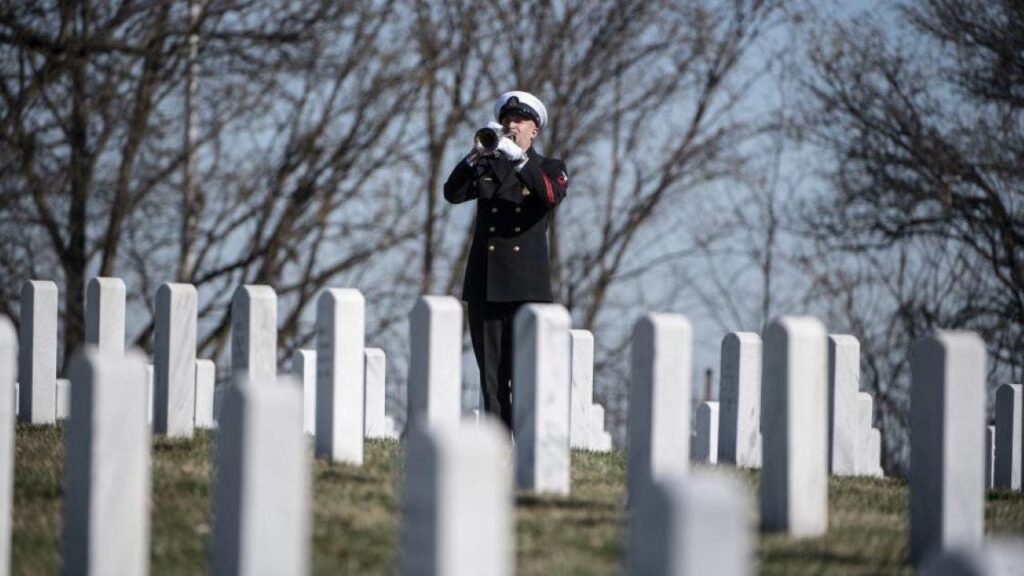On this significant day in history, June 15, 1864, Arlington National Cemetery was officially established as our nation’s prestigious military burial ground. The cemetery’s beginnings trace back to the acquisition of Gen. Robert E. Lee’s hilltop residence after he sided with the Confederacy during the Civil War, as noted by History.com. Arlington National Cemetery in Virginia has a rich history that dates back to just before the Civil War.
Prior to the establishment of the national cemetery, George Washington Parke Custis, the adopted son of President George Washington, owned a vast plantation spanning 1,100 acres. He erected a memorial to President Washington on the property, known as Arlington House, which held the largest collection of memorabilia related to the first president, according to the U.S. Department of Veterans Affairs. Ownership of the estate later passed to Custis’ daughter, who was married to Robert E. Lee. The couple resided in Arlington House for over three decades. Lee, a Virginia native, faced a difficult decision as he contemplated whether to lead the Union Army or fight for the Confederacy of his home state.
Lee ultimately chose to resign from the U.S. Army on April 20, 1861, knowing that the Union forces were likely to seize his property due to its strategic location overlooking Washington, D.C. The following day, he departed for Richmond, Virginia, instructing his wife, a descendant of Martha Washington, to vacate their home. Despite initially resisting, Mrs. Lee accepted the inevitable Union occupation of their family estate. On May 24, 1864, Union troops moved into Arlington and took control of the house, marking the beginning of the cemetery’s transformation.
Brig. Gen. Montgomery Meigs, commander of the forces at Arlington, advocated for the conversion of 200 acres of Lee’s property into a cemetery to accommodate the Union dead and memorialize fallen soldiers. In May 1864, the first soldier was laid to rest in Arlington, with more than 16,000 graves filling the area near Arlington House by the end of the Civil War. Within a year, over 5,000 soldiers, primarily privates, were buried there, starting with William Henry Christman, who died of measles after serving in the Army for just 60 days. On June 15, 1864, Secretary of War Edwin Stanton officially designated the burial ground as Arlington National Cemetery.
Gen. Meigs, who passed away in 1892, was interred at Arlington, along with his family members. The cemetery adopted a segregated policy based on race and rank, a practice that persisted until President Harry S. Truman desegregated the military in 1948. Arlington hosted the first official “Decoration Day,” now known as Memorial Day, on May 30, 1868, solidifying its significance as a national military cemetery. Today, Arlington National Cemetery stands as a premier burial ground, with two U.S. presidents resting there.
In addition to its historical markers, the cemetery established The Tomb of the Unknown Soldier in 1921, dedicated to an unidentified soldier from World War I. Subsequent internments include President William Howard Taft in 1930 and President John F. Kennedy in 1963. Currently, Arlington National Cemetery spans 639 acres and serves as the final resting place for approximately 400,000 veterans and their eligible dependents. The cemetery’s enduring legacy as a symbol of honor, sacrifice, and remembrance continues to resonate across generations.
In conclusion, the establishment of Arlington National Cemetery on June 15, 1864, marked a pivotal moment in our nation’s history, commemorating the sacrifices of brave soldiers and honoring their enduring legacy. The cemetery’s evolution from a civilian estate to a revered military burial ground reflects the enduring spirit of remembrance and gratitude for those who have served our country. Today, Arlington National Cemetery stands as a timeless tribute to the courage, valor, and dedication of our nation’s heroes.












